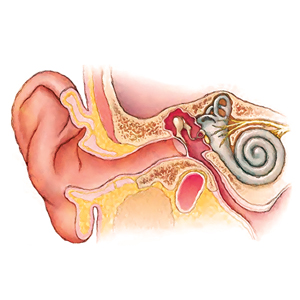 Perhaps winter is a good time to take our ears a little more seriously. They’re complex structures, after all, that manage hearing, balance, and pressure in our faces and heads.
Perhaps winter is a good time to take our ears a little more seriously. They’re complex structures, after all, that manage hearing, balance, and pressure in our faces and heads.
The moving parts in the middle ear transmit sound; the circulating fluid in the inner ear helps you maintain balance; and the Eustachian (pronounced U-sta-shun) tube connects these spaces with the mouth and throat. Winter’s chill and the cold weather in general can make these structures more sensitive. The result? Pain, pressure, or dizziness—symptoms that can be manifestations of infection anywhere in the ear, sinuses, or throat.
Changes in temperature can change the pressure differentials in these structures. Some ears are just very sensitive when exposed to cold and wind. And the truth is, middle ear infections are more likely to occur during the winter months for most of us. If you or your child experiences six ear infections in one year, or three per year for three years in a row, it might be time to consider ear tube placement. Fluid within the middle ear from any cause can result in permanent hearing loss, and placement of tiny tubes through the ear drum can equalize the pressure and drain fluid, thereby preventing permanent damage.
Whether or not tubes are a consideration, the best course for winter ear pain is to prevent it. Be sure your ears are dry when you go out in cold and wintry weather, and protect them with hats or earmuffs. Take precautions to avoid colds and flu, which can result in ear pain. If you develop fever, dizziness, drainage, or persistent or recurrent ear pain, it’s time to consult your physician.



